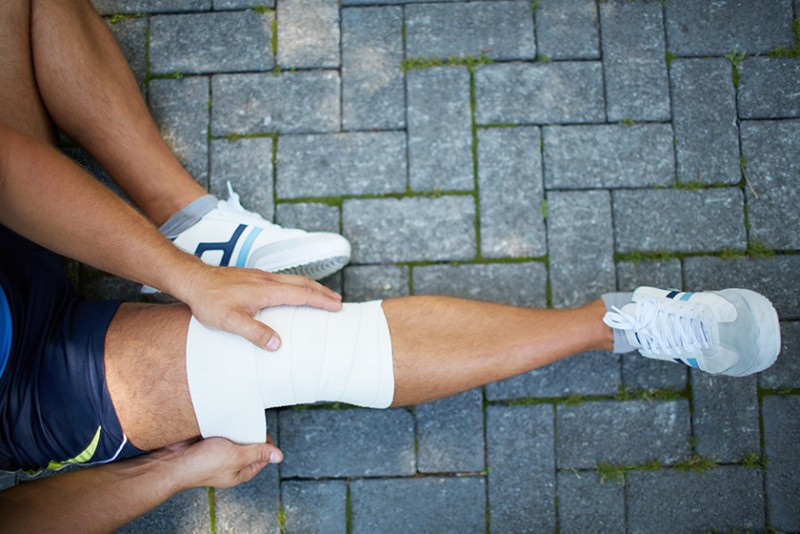Maintaining good working order of our bodies is about more than getting good cardio workouts, lifting weights to tone and build our muscles, caring for our skin and eating the right foods to properly feed our body's major organs. Let's not forget that our joints also need our constant love and attention. Need you be reminded how achy and stiff our joints can be when we first get up in the morning, or even when we've spent the last several hours melting into the sofa or easy chair while watching TV? It's easy to take our joints for granted, even though we have more than 200 of them in our body connecting the bones in our back, arms, legs, jaw, hips, shoulders and in other parts of the body. Maybe you didn't know this: there are joints in our skull that help protect our brain, much like the kind of joints that hold our teeth in our jawbone. And that old saying about not getting your nose out of joint when you get ticked? Sorry, but there are no joints in the human nose, so next time you get mad, you'll just have to be content with losing your temper or getting your dander up. Just to cover the basics, the joint is where two or more bones are joined together, where they are held together by bands known as ligaments. The presence of cartilage allows the bones to glide over one another, protecting the bones by keeping them from rubbing against one another. At least, that's how a healthy joint is supposed to work. Keeping our joints healthy allows us to run, walk, throw, jump and perform dozens of other activities great and small, provided we stay active (keep those joints moving), eat nutritious meals, avoid injuries and get sufficient sleep. Skimp in any of those areas and, well, good luck getting out of bed in the morning. Even with the best of care, however, things can go wrong with our joints, most notably with the onslaught of arthritis. There are two kinds: the most common type is osteoarthritis, where, according to the National Institute of Arthritis and Musculoskeletal and Skin Diseases, a joint's surface cartilage wears away and bones start to rub together. Possible factors contributing to the onset of osteoarthritis, identified in a CNN report several years ago, include aging, previous injuries (even forgotten ones from years ago), inflammation, loss of muscle mass and excess weight. Then there's rheumatoid arthritis, an autoimmune disease in which the immune system attacks joint tissue, causing pain, swelling, stiffness and loss of joint function. It can also cause long-term damage to the joints and even affect the heart, lungs or other organs. Other forms of arthritis include gout (usually in the big toe), juvenile arthritis, lupus, fibromyalgia and psoriasis. The only type of arthritis that can be cured, according to medlineplus.com, is one caused by an infection. Other types must be treated with a combination of rest and consistent exercise as well as medication, and vitamin and mineral supplements.
Tips for Keeping Your Joints Healthy
Here are some tips for taking proper care of your joints to improve the chances of them working well for you in the years to come:- A cardio workout like swimming or biking is easier on the joints than running, high-impact aerobics or even kickboxing. Less pounding on the joints.
- Try wearing braces for added support, such as a knee brace (walking/running), elbow brace (tennis) or ankle brace (golf—ask any golf pro: a well-anchored stance is fundamental to the golf swing).
- Stretch after the workout vs. before. Stretching is more effective when the muscles are warmed up.
- Strength training gives our joints better support. A little improvement in strength goes a long way
- Fish consumption can reduce inflammation. Salmon and mackerel are good sources of omega-3 fatty acids, which are yummy to joints. Tuna is good, too.
- Maintain good posture.
- Keep moving. If your job has you nailed to a seat and feeling like the Tin Man the two or three times a day you get up, add some movement to your daily routine. Get up and walk around for a few minutes every hour. Stay loose, man.
- If you feel joint pain after a workout, apply a cold pack, ice wrapped in a towel or a bag of frozen vegetables. It numbs the pain and minimizes swelling.
- Lose weight. It's said that every pound lost equates to four fewer pounds of pressure on the knees.
- Change up your exercise routine from day to day. Cardio one day, strength exercises the next, mixing in stretching and relaxation.

